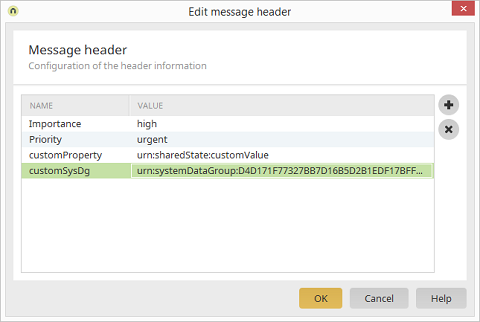Advanced Techniques - Setting header information
So-called header information can be set in an email action in a process. By setting these properties, messages can be more precisely defined and identified, e.g. with a specific priority or confidentiality level. Additionally, Intrexx users can define and set their own header properties, so that the information can be used to control their own workflows. Add an Email action to any process. Switch to the Content tab of the properties dialog.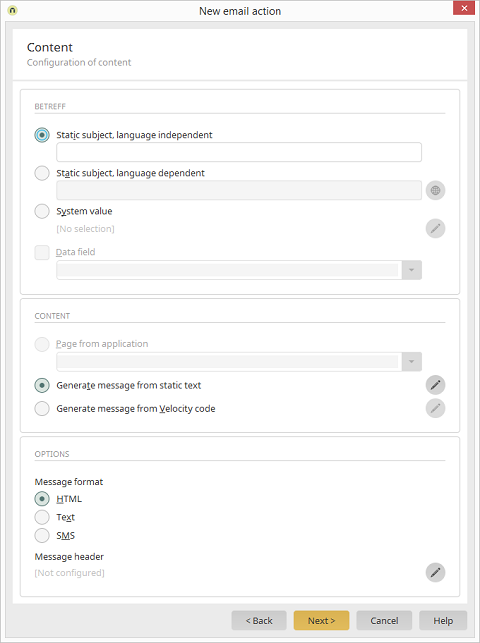
In the Options section, click on
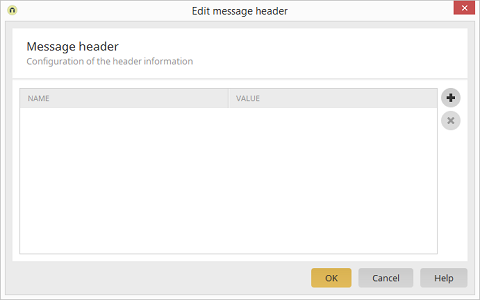
Click on
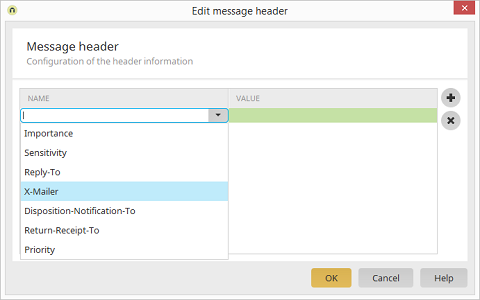
Some properties are predefined. If one of those is selected in the Name column, then the corresponding predefined suggestions will appear in the Value column.
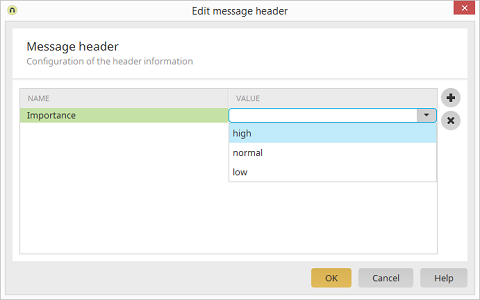
For some properties the value ${sender} can be specified. In this case, the sender of the email will be entered dynamically. Confirm the settings by clicking on OK. If an email is then sent, the properties can be found in the email client as well as in the detailed header information.

If, in addition to the predefined properties, you need to create your own custom properties, these can be entered directly in the dialog.
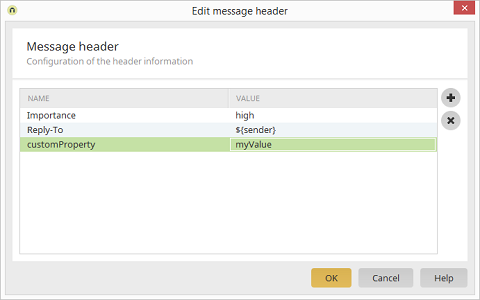
Dynamic values can also be applied here, in place of static values, for example, from the shared state of the processing context. The following prefixes are supported:
- urn:sharedState:
- urn:request:
- urn:session:
- urn:user:
- urn:systemDataGroup:
def strValue = g_record["5A1D3EC0DB71BE6B6BC4F83BECCE85ACD22F82E6"].value
g_sharedState.customValue = strValue
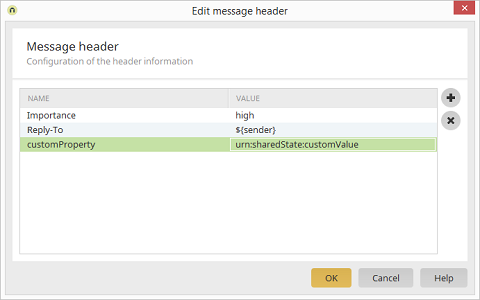
When using an entry from a system data group, the value will be setup as follows:
urn:systemDataGroup:APPLICATION_GUID:DATAFIELD_GUID
urn:systemDataGroup:D4D171F77327BB7D16B5D2B1EDF17BFFEBF1E11B:6F05E558E9BA291EE08DC9808EFF2BD36A80B3C2
